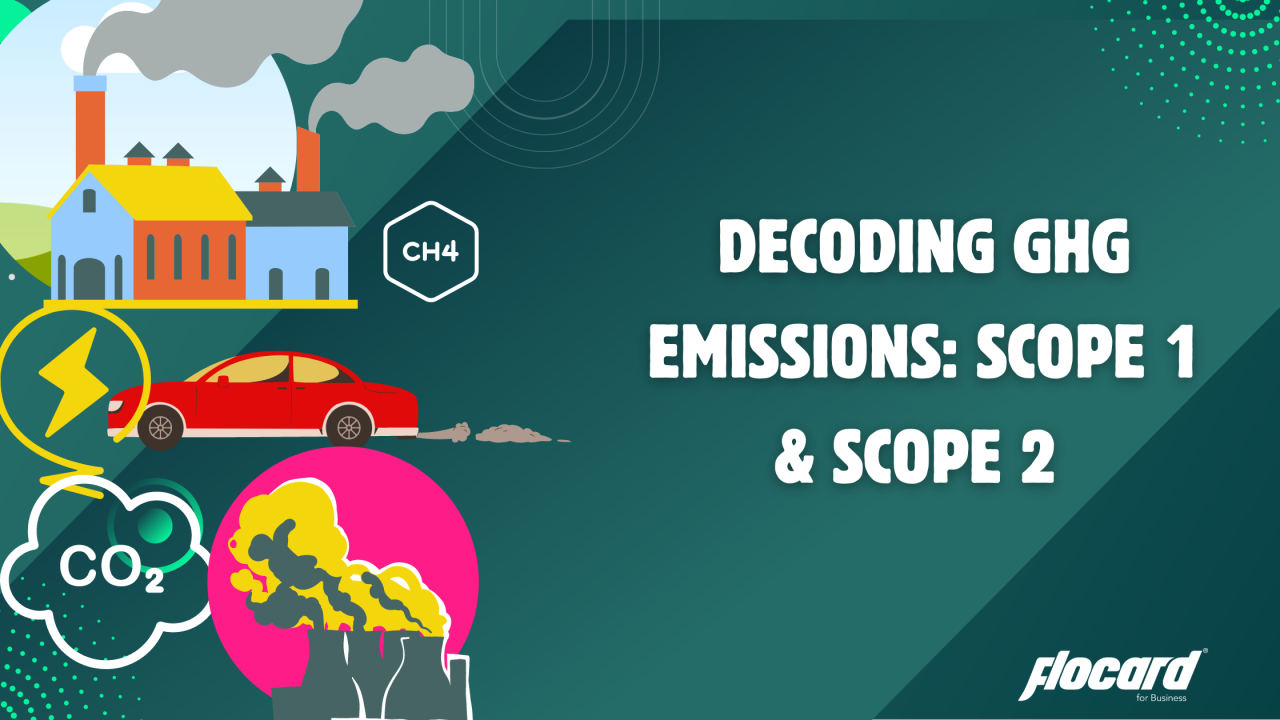Direct vs. Indirect Emissions: Navigating Scope 1 and Scope 2 in the Fight Against Climate Change

Deciphering the Carbon Code
Climate change is a pressing concern in today’s world. Rising global temperatures, sea level rise, shrinking glaciers, floods and droughts, forest fires, and decreasing food stocks are some of the impacts due to climate change. Climate change is not the result of single-day intervention in the global atmospheric systems but is a result of continuous emissions from industrial systems and non-industrial systems. However, industrial emissions are the major contributors to the climate change. Greenhouse gases like carbon dioxide, methane, nitrous oxide and chlorofluorocarbons form these emissions.
These gases trap the heat radiated back from the Earth’s surface and increase the overall temperature of our planet, thereby causing climate change. Thus it becomes crucial to identify the sources of greenhouse gases in different industries and across countries. This is crucial to effectively manage the emission sources and create reduction strategies for GHG emissions.
The Basics of GHG Emissions
Greenhouse gases (also known as GHGs) are integral components of Earth’s atmosphere that trap heat. During the day, the sun heats the planet and during the night, the earth’s surface cools down. However, some of the gases trap the heat making our planet liveable.
These gases behave like glass in a greenhouse, hence the name. Without the presence of these gases, the temperature on the Earth would be as low as -18 ℃, making it too cold to sustain life. However, over the years, rising industrialization and anthropogenic activities have increased greenhouse gases in the atmosphere. They are the reasons for rising temperatures resulting in global warming and climate change. Global temperatures have accelerated in the past 30 years and are now the highest since records began.
Carbon dioxide, methane, nitrous oxide and water vapour are natural greenhouse gases. Carbon dioxide is released through natural processes and industrial emissions and is the main contributor to climate change. Water vapour is an abundant green house gas which increases Earth's temperature but stays for a few days in the atmosphere. Methane is naturally produced through decomposition and human activities like cattle farming and landfill waste dumps. Nitrous oxide is produced through the use of fertilisers and fossil fuel combustion. On the other hand, industrial gases like hydrofluorocarbons, perfluorocarbons and sulphur hexafluoride are man-made greenhouse gases. They are present in small concentrations but are potent heat trappers.
On a global level, international treaties like the Kyoto Protocol (1997) aim to reduce greenhouse gas emissions while the Paris Agreement (2015) aim to limit global warming to well below 2 degrees Celsius, compared to pre-industrial levels. These treaties even ask the countries to review their overall emission. All the greenhouse emissions generated by the company or country are referred to as carbon footprint. To account for the GHG emissions, the GHG protocol categorises them under different “scopes” such as Scope 1, scope 2 and Scope 3. The concept of scope comes from project management and refers to all processes and resources needed to complete a project.
Understanding Scope 1 Emissions
Scope 1 emissions are the direct emissions that come under the direct control of the company or are owned by the company. Scope 1 emission sources are categorized into the following categories:
-
Stationary emissions: These emissions result from combustion of fuels in stationary units which leads to the generation of heat, steam or electricity. E.g. from boilers, and furnaces.
-
Process emissions: These emissions result from the manufacture of goods, processing of chemicals or materials and operations. E.g. from chemical manufacturing.
-
Mobile emissions: The emission from transportation of materials, products, waste and employees. E.g. from owned vehicles or fleets.
-
Fugitive emissions: The emissions resulting from equipment leaks like joints, seals, packing and gaskets. It may be leaks from gas transport, refrigerants, coal mining and vents.
Scope 1 emissions are mandatory to report . They are the easiest to calculate and as they are derived from direct sources, it becomes highly significant for the companies to track them down. Scope 1 emission tracking ensures that companies and businesses map the emissions and take appropriate mitigation measures to reduce Scope 1 emissions. Scope 1 emissions are a potential financial burden for the companies and environmental damage to our ecosystem.
Understanding Scope 2 Emissions
Scope 2 emissions are indirect emissions from the generation of purchased energy, steam, heat and/or cooling. These emissions may be purchased electricity from local utilities or purchased heating/cooling systems. These emissions result from electricity used within the organisational setups, which is purchased from third parties.
Electricity needed to run a rented office or a leased vehicle and the electricity used to run heating and cooling systems are some examples of scope 2 emissions. Thus, for most of organizations, electricity will be a unique source of scope 2 emissions. These emissions can be calculated based on location or market.
here is a stark difference between Scope 1 and Scope 2 emissions. Scope 2 is indirect emissions that are a consequence of the sources not owned or controlled by the company. On the other hand, Scope 1 emissions are the direct emissions that are a consequence of the source owned and controlled by the company. Scope 1 is easier to calculate than Scope 2.
Energy consumption for most of the company is accounted for under the Scope 2 emissions inventory. Companies can reduce Scope 2 emissions by reducing energy consumption through energy conservation programs and energy efficiency interventions. Actions like switching to renewable energy, purchasing energy credits, promoting remote work and regular monitoring and reporting emissions are crucial to reducing scope 2 emissions.
Managing Scope 1 and Scope 2 Emissions
GHG accounting is done for scope 1 and scope 2 gases. This is done using the GHG protocol, which is a group of standards and a widely used accounting system. This accounting standard provides sector guidance, calculation tools and training for businesses. It is a comprehensive framework for measuring and managing emissions from private and public sectors, value chain systems, and products to enable greenhouse gas reductions. Similarly, the International Organization for Standardization published ISO 14064 standards for GHG accounting and verification. It is based on GHG protocol.GHG protocol employs various tools for measuring emissions across different sectors, countries, and cities and devising mitigation measures to reduce scope 1 and scope 2 emissions.
Scope 1 emissions can be reduced by adopting measures such as improving energy efficiency, using renewable energy, implementing green building practices, using low-carbon fuels, and implementing facilities like carbon capture and storage.
Similarly, scope 2 emissions can be reduced by minimising energy consumption. Energy conservation and employing energy efficiency interventions are crucial to decreasing scope 2 emissions. This emission can even be managed by purchasing energy credits and promoting remote work. Thus, it is essential to measure scope 1 and scope 2 emissions to ensure efficient mapping of carbon emissions for management and reduction of greenhouse gas emissions.
Conclusion
Managing scope 1 and scope 2 emissions is important because it helps reduce pollution and follow the rules. It also makes businesses look good, saves energy by utilising the energy better and protects the planet from climate change. When companies control these emissions they make sure to care for the planet, making people happy and business build stronger.
Taking proactive measures like reducing energy consumption, recycling and buying eco-friendly products, by individual promotes sustainability. Similarly, businesses can also embrace sustainability practices as they enhance their reputation attract environmentally conscious customers and save money. Together, we can make a positive impact on the environment, ensuring a healthy planet for the future.
Have you ever stopped and wondered, how daily activities affect greenhouse emissions? From our morning rituals to our food in dinner, all add up to GHG emissions. It would be really interesting to know your experiences in reducing emissions by adopting eco-friendly changes.
Flocard , as a tool is approaching to offsetting scope 1 and scope 2 emissions by enabling businesses to invest in reforestation and conservation projects. By utilizing FloCard , businesses can only offset their direct and indirect emissions and demonstrate their commitment to sustainability by supporting meaningful projects that benefit both the planet and local communities.
